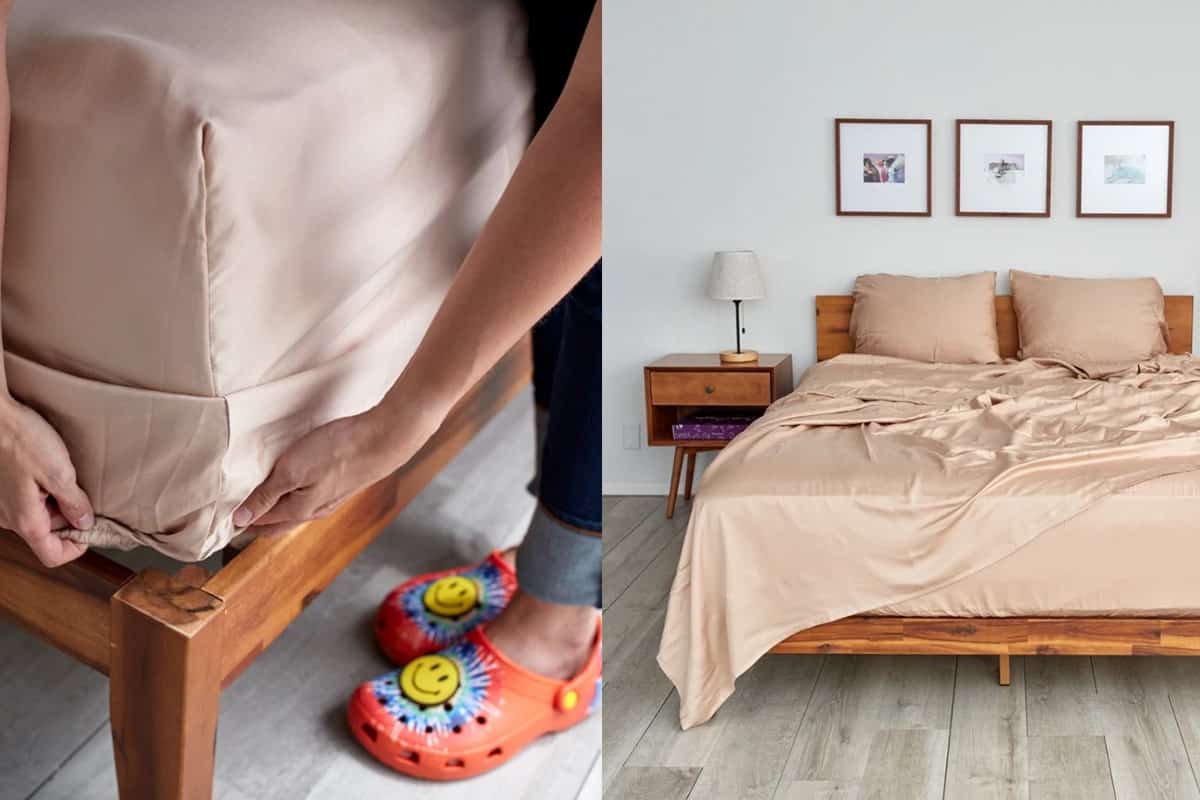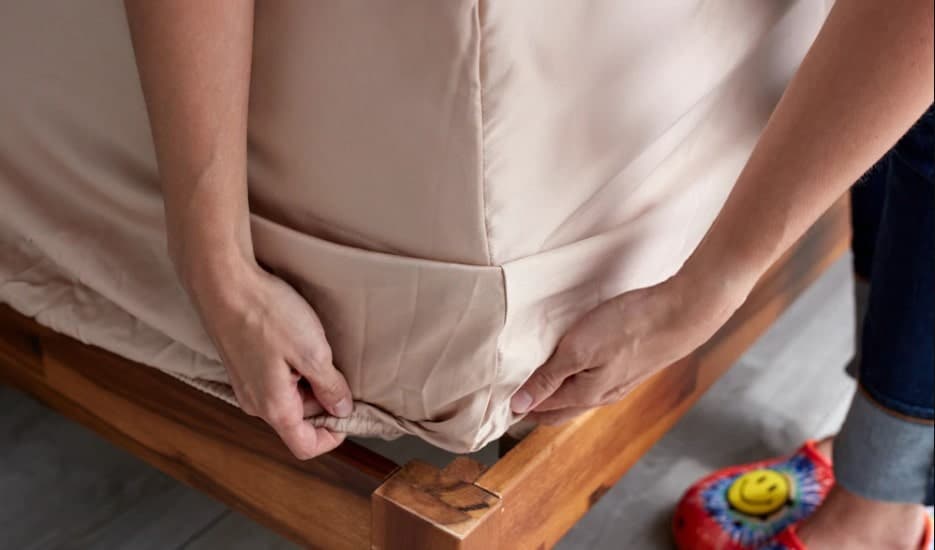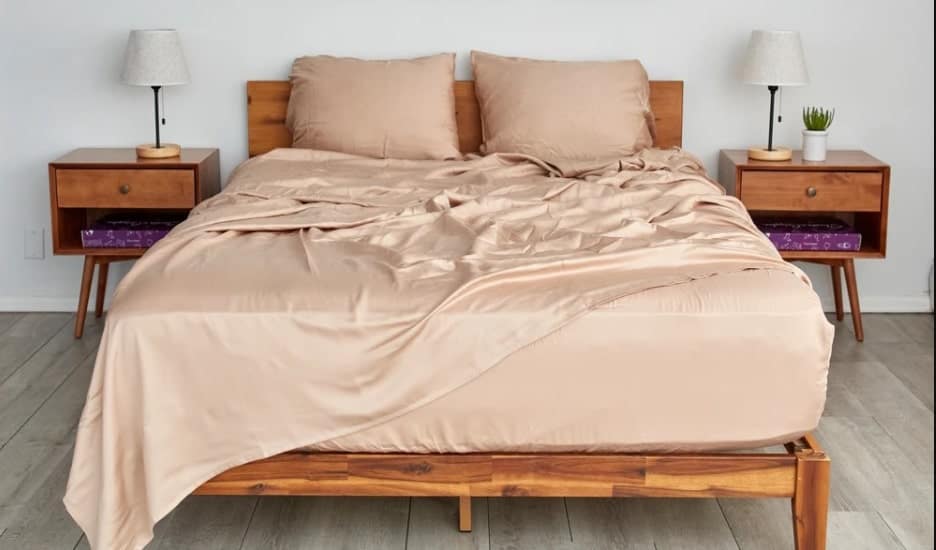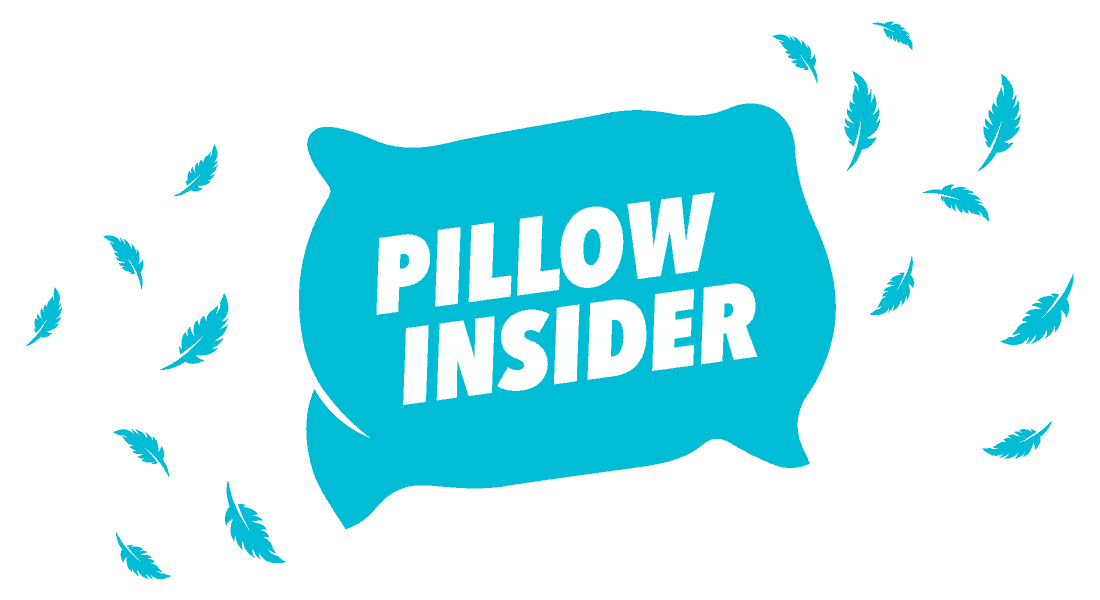There is a huge variety of bed sheets in the market, and often we browse through shelves of options at our local retailers to find the best fit for our bed. In fact, with so many design choices, it becomes overwhelming to choose just one.
When buying sheet sets, whatever the bedding requirements, it all narrows down to two options – Fitted or Flat sheets. But which one is the right fit for you? It’s a quite common bedding debate and there are several key factors that can go into deciding between flat and fitted sheets. Keep reading this sheet debate to find out the differences and more about the findings of our comparison.
Difference Between Fitted and Flat Sheets
Flat sheets, also known as top sheets, gained popularity in the 15th century when people first started using bed sheets in general. Flat sheet is a rectangular piece of cloth that are draped over the fitted sheet. To ensure the top bed linen stay put, people miter their corners (or hospital corners), which is a simple folding and tucking technique that stops the sheet from shifting too much or slipping off the mattress.
Synonymous with their name, top sheets are placed over the sleeping person and underneath the comforter or duvet. Their purpose is to keep the sleeping person warm and to protect the duvet from getting dirty, preventing it from frequent washing.
On the other hand, fitted or bottom sheets go right over the mattress and under the sleeping person. Fitted sheets are rectangular pieces of fabric sewn with an elastic hem and pockets that tightly grasps all four corners of the mattress. These bed sheets not only help in mattress protection, but are also much easier to maintain and wash.

1. Mattress Protection and Skin Protection
Contrary to the flat or top sheet, which protects the bed covers laid over it e.g. blankets, quilts, comforters, etc., a bottom sheet protects the mattress from the everyday wear and tear. A mattress is usually the most expensive piece of your bedding set, and its proper upkeep should allow it to last anywhere between 10 to 12 years.
Where fitted sheets act as a barrier for mattresses, flat sheets can shield skin against common irritants such as mites, bacteria, or dust that hide in the dark corners of your bed and mattress. These can aggravate the skin up to the points of itchiness that cause rashes or worsen other skin conditions such as eczema or psoriasis.
A flat bed sheet composed of a soft and high thread-count material can keep the skin cool by protecting its natural moisture repellants and stopping the skin from reacting or flaring up.
2. Removal

It is quick and convenient to remove fitted bed sheets because of their elasticated hem and pockets. By holding and loosening one of the corners, the rest of the bed sheet can be tugged off and removed.
Unlike fitted sheets, the mitered corners of flat sheets tightly tucked under the mattress require greater slackening of all corners. Most often, the corners of these bed linen are tied to prevent it from shifting too much. Untying these knots may take time, which makes the overall removal process quite cumbersome for flat sheets.
3. Cleaning and Maintenance
Flat sheets protect duvet covers and blankets from getting dirty. If a person lying under the duvet is injured or suffers from skin ailments that cause discharge, a flat sheet would prevent the expensive duvets, quilts, etc., from those stains and rips. Regular washing of flat sheets also saves the hassle of cleaning and maintenance of hefty duvet covers — a much more tiresome task comparatively.
Moreover, a flat sheet also offers the fitted sheet protection from stains or tears since it covers it. It also blocks them from absorbing any air particle or dust if no duvet is on top of the sheets. The easy removal of elasticated fitted sheets also makes the laundry process easy to accomplish.
4. Iron and Folding
The flat sheets are relatively easier to fold as compared to fitted sheets since they have no elastic band sewn to their edges. While folded top sheets can hold their square shape of fabric, bottom sheets tend to resemble a circle or some other random shape when folded.
In short, flat sheets fold quickly and nicely but fitted sheets come with elastics around all of their corners, making it difficult to fold. They also easily wrinkle and do not lie flat unless tucked over the mattress which makes them much more difficult to iron as compared to flat sheets.
5. Temperature Control
When it comes to temperature control, flat sheets offer better temperature control as compared to fitted sheets. It can be used in the warm summer months to support the body in naturally regulating its core temperature to a cooler one. Furthermore, during hot and humid nights, a flat sheet may be the only thing protecting the skin from irritants that may aggravate it.
By being moisture repellant, a flat sheet can stop the sleeper from waking soaked up in their sweat. In cold winter months, a top sheet not only offers additional warmth and another comforting layer to the bed but also attaches a layer of protection for sensitive skin that is in direct contact with the blanket or comforter.

Frequently Asked Questions
Can you use a flat sheet as a fitted sheet?
It’s recommended that you don’t use a flat sheet as a fitted sheet since flat sheets may move around too much, getting bunched up at the end of the bed while sleeping. Having said that, flat sheets can be used as an alternative to fitted sheets as their corners can be tucked into the mattress for a snug fit. However, they need to be the right size and have enough fabric-room leftover to get tucked under the mattress.
Why do hotels not use fitted sheets?
Bedding and sheets used in luxury hotels require regular cleaning and maintenance, so they need to be repeatedly changed. It is easier to remove a fitted sheet, but all that extra wear and tear of washing and using would result in a stretched out useless elastic. The elastic would get damaged at a much faster speed than the time it takes for the actual bed sheet to wear out.
Moreover, hotels have a large amount of inventory to maintain, particularly when it comes to bed linens and terry washcloths. There needs to be one set of linens for the bed, one set of terry in the wash, and one on the shelf. With different kinds of inventory to keep in check, it is much better to have two flat sheets instead, since they can be ironed and folded easily, unlike fitted sheets.
Do you put a fitted sheet over a mattress protector?
Fitted sheets need to be laid over mattress protectors as these protectors are composed of synthetic material, and the surface is usually brushed cotton or spun bamboo, and a layer of polyurethane (or similar) — all of which creates a stiff and less supple sleeping surface.
Furthermore, no mattress protector can provide a luxurious and comfortable feel of fitted sheets. Instead, their function is only to save mattresses from stains or spills and to provide adequate protection as they keep dust mites and sweat from pervading the mattresses.
Should you sleep with a top sheet?
It is preferred to use a flat sheet. Without a top sheet, copious amounts of sweat soak straight through the duvet cover into the body of the duvet. On average, a human can sweat around 87 liters of moisture per year, and at least a third of that amount goes straight into bedsheets, resulting in an accumulation of bacteria and fungus.
Moreover, most duvet covers are not sturdy enough to withstand laundry every week, and even if a duvet cover goes into the laundry every week – but what about the duvet itself? The flat sheet is the final line of defense between the sleeping person and all the germs soaked into the core of the duvet. Flat cotton bed sheets are recommended for use during summer.
What goes under the fitted sheet?
It can either be a mattress topper or a mattress cover, depending on whether someone adds one of the two, both, or none.
Mattress pad is a removable layer that provides extra padding to the top of the mattress to add more support and comfort. There are different bedsheet materials available on the market, from polyester to memory foam and even down and feather filling, that serve different sleeping needs and budgets.
The mattress cover, also known as a mattress protector, is placed above the topper (if added). It shields the mattress from wear and tear and dust. Most of these are waterproof and protect from allergens and bed bugs, while others also carry an extra layer perfect for insulation.
